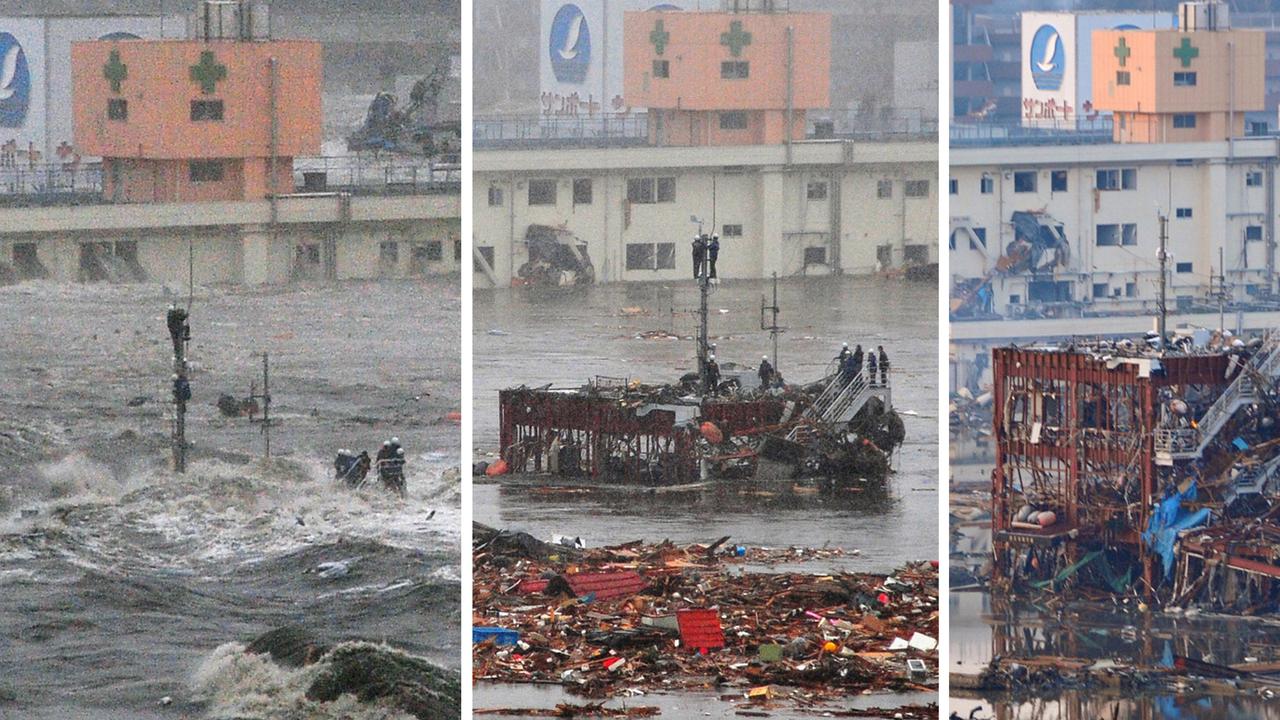Boxing Day tsunami: Lessons of history so easily forgotten
AT 6.40am on Boxing Day 2004, the Queen of the Sea pulled out of Colombo’s Fort Station on its daily run to Sri Lanka’s Galle.
AT 6.40am on Boxing Day 2004, the Queen of the Sea pulled out of Colombo’s Fort Station on its daily run to Sri Lanka’s southwest coastal city of Galle.
For two hours and 40 minutes, the train rolled imperviously towards catastrophe as the first seismic readings went unmonitored and the catastrophic waves smashed the island from the east coast to the west.
When Sri Lankan rail authorities finally realised that the train was heading into the tsunami zone, they tried to stop its progress, ringing the Ambalangoda station where it had stopped to offload passengers and goods.
But the stationmaster and his assistant were busy unloading the train and did not get the message until it had left. There was no way to contact the driver. He had no mobile phone.
Thirty eight minutes after the first wave hit Sri Lanka’s east coast — two hours after it hit Banda Aceh in Indonesia — the Queen of the Sea was struck with the full force of the second and third waves, sweeping the eight carriages from the tracks and between 1700 and 2500 people to their deaths.
INTERACTIVE: Boxing Day tsunami 10 years on
The exact toll is clouded by the fact that hundreds of local villagers in Telawatte, running for their lives from the first wave, scrambled on to the roof of the stationary train believing they would be safe.
“Had we known how a tsunami takes place, we would have saved so many lives by running away from the sea after that first wave,” says Wanigaratne Karunathilake, a train guard who was on duty at the time and still works on the line.
“There was at least 20 minutes, ample time to run away from the sea and save lives.”
GALLERY: Then and now- Boxing Day tsunami
That the world’s worst rail disaster could have occurred for wont of a mobile phone seems incredible today, just 10 years after the deadliest tsunami in recorded history took 230,000 lives across 14 countries and destroyed millions of livelihoods. In Sri Lanka, where 35,000 died, officials say there could never be another Queen of the Sea disaster. For one thing, 37 out of every 100 people owned a phone in 2004; within six years, mobile phone ownership had reached saturation.
There is now an Indian Ocean tsunami warning system, though not the single integrated scheme envisaged in the wake of the Boxing Day disaster.
Rather, it is a compromise “system of systems” in which Australian, Indonesian and Indian centres individually analyse major quakes and tsunami potential and issue regional alerts to national authorities, triggering local warnings and evacuation plans.
Almost 168,000 people died in Aceh province, spurring intensive national and local disaster planning in the aftermath.
But community preparedness training lost impetus after 2007 when foreign non-government organisations were told to leave.
The Aceh disaster management agency, BPDA, regularly tests warning equipment and has reinvigorated local evacuation planning, but a BPDA official conceded recently that there was still no province-wide training.
Nor is there an active Education Ministry directive for earthquake and tsunami drills in schools. Several principals say there have been no drills in their schools since 2007.
Large murals attest that Lhoknga’s Ibtidayah Negeri madrasah is a “disaster-ready school” and pupils are regularly drilled in evacuation and first aid. “We continue this as our initiative and I am certain it benefits our children,” principal Maruan said.
“Last month an earthquake happened about 7.30am and all our pupils straight away moved to the playground gathering place, even though I was the only teacher at that time.”
Thailand’s Andaman coast, where 8500 are known to have died in 2004, is the heart of the country’s huge and economically vital tourism industry.
But hoteliers in Khao Lak, which suffered the worst losses of tourists and locals, said recently that there had been no officially-mandated tsunami drills in four years. Some resorts have their own drills and disaster plans, but others says they don’t want to reawaken tsunami fears among guests.
Phuket provincial authorities planned a full-scale tsunami drill for Christmas Day. “We are fully aware that the drill may affect some people who lost their friends and family 10 years ago,” an official said.
“However, we will use this opportunity to remind them about being alert and prepared for natural disasters so they know what to do when it occurs.”
In India, where up to 18,000 perished 10 years ago, an early-warning system was established to analyse real-time data and alert the Home Affairs Ministry, the National Disaster Management Authority, coastal relief commissioners, ports, the Indian Coast Guard and the navy.
However, a scathing government review ordered in the wake of last year’s deadly Himalayan flash flooding in Uttarakhand province found NDMA executive had not met in five years, and was focused on relief and rescue at the expense of disaster mitigation.
A Sri Lankan disaster-management centre was set up after 2004 to disseminate uniform warning and evacuation protocols across the country, with coastal evacuation drills every few months.
Yet the government badly fumbled its April 2012 test. While Indonesia, India and Thailand issued national warnings within minutes, Sri Lankan authorities took a full hour to issue an evacuation watch notice.


